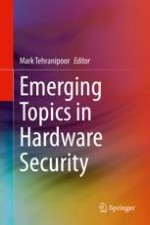2021 | OriginalPaper | Buchkapitel
8. Post-Quantum Hardware Security
Physical Security in Classic vs. Quantum Worlds
verfasst von : Ana Covic, Sreeja Chowdhury, Rabin Yu Acharya, Fatemeh Ganji, Domenic Forte
Erschienen in: Emerging Topics in Hardware Security
Aktivieren Sie unsere intelligente Suche, um passende Fachinhalte oder Patente zu finden.
Wählen Sie Textabschnitte aus um mit Künstlicher Intelligenz passenden Patente zu finden. powered by
Markieren Sie Textabschnitte, um KI-gestützt weitere passende Inhalte zu finden. powered by
